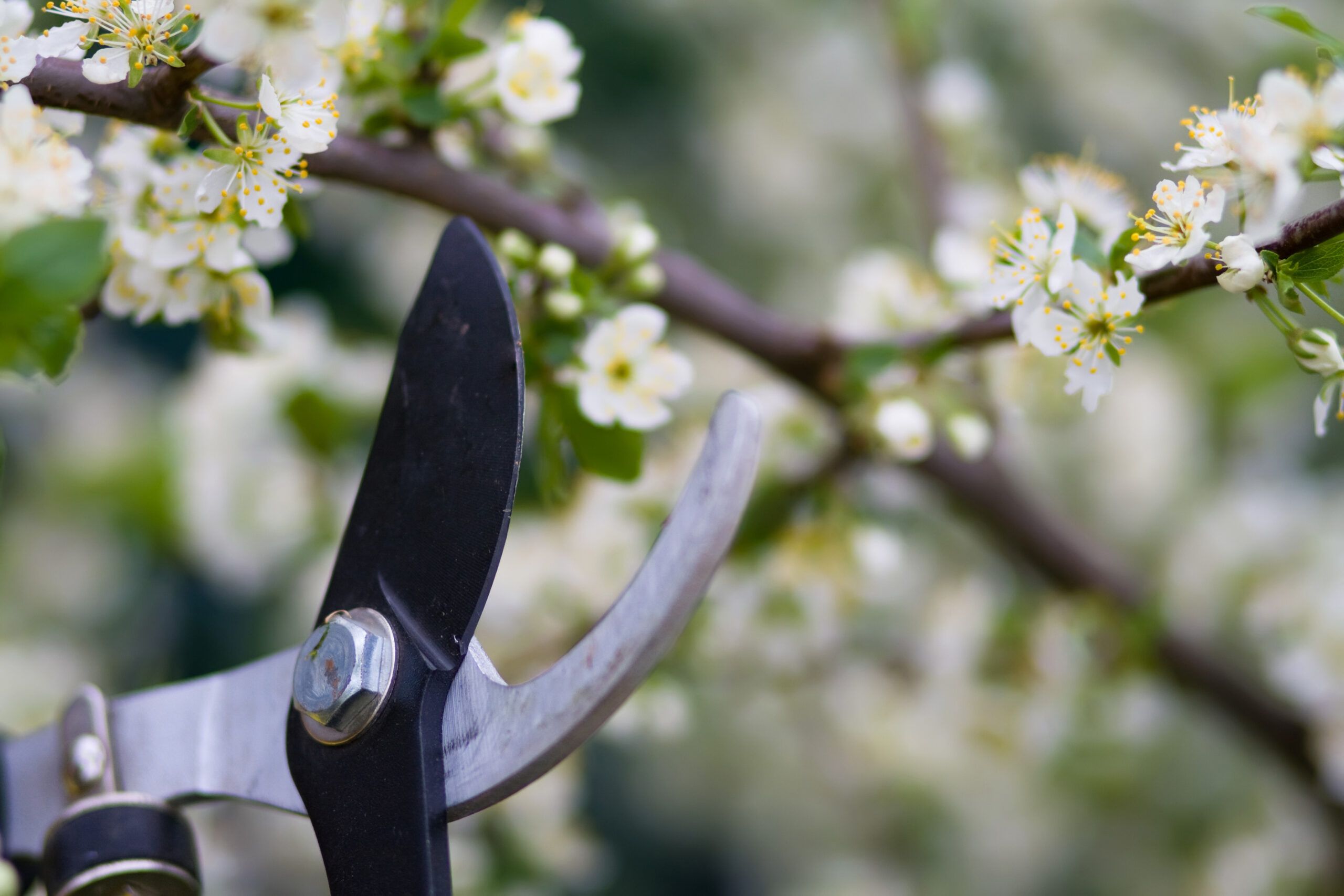Pruning and dividing plants are important tasks for maintaining a healthy, vibrant garden. These techniques help promote growth, control size, and multiply your favorite plants. This guide walks you through the essentials of pruning and dividing, providing you with the knowledge and confidence to tackle these vital garden maintenance tasks.
Understanding the Importance of Pruning and Dividing
Pruning and dividing are two fundamental practices in garden maintenance that offer numerous benefits to plants. While the prospect of cutting into seemingly healthy plants may seem daunting, understanding the proper methods can lead to thicker foliage, more flowers, and overall healthier plants.
Pruning involves selectively removing parts of a plant to improve its structure, health, and appearance. Dividing, on the other hand, is the process of separating an established plant into multiple smaller plants. Both techniques stimulate new growth, prevent overcrowding, and can even help rejuvenate older plants.
Best Times To Prune and Divide Plants
Timing is important when it comes to pruning and dividing plants. The optimal time for these activities depends on the plant type and its growth cycle. Generally, it’s best to prune and divide when plants are not actively growing or flowering.
Spring Pruning and Dividing
Spring is an ideal time for pruning many plants, especially those that bloom in summer. As the weather warms up and new growth begins, it’s the perfect opportunity to shape plants and remove any winter-damaged branches.
For dividing, spring is best for late-flowering perennials. This gives the newly divided plants ample time to establish roots before the heat of summer.
Fall Pruning and Dividing
Fall is another excellent time for pruning and dividing, particularly for early-flowering perennials. Pruning in fall can help prepare plants for winter dormancy and remove any diseased or damaged growth. When dividing in fall, be sure to do so well before the first frost to allow roots to settle before the ground freezes.
Essential Tools for Pruning and Dividing
Having the right tools will help support effective pruning and dividing. Proper tools not only make the job easier but also ensure clean cuts that promote healing and reduce the risk of disease.
Pruning Tools
For pruning, essential tools include:
- Hand pruners for small branches
- Loppers for thicker branches
- Pruning saws for larger limbs
- Hedge shears for shaping hedges and bushes
Dividing Tools
When dividing plants, you’ll need:
- Garden fork or spade for digging up plants
- Sharp knife or pruning saw for separating roots
- Garden scissors for trimming leaves and stems
Pruning Techniques for Different Plant Types
Different plants require different pruning approaches. Understanding these techniques will help you maintain the health and appearance of various plants in your garden.
How To Prune Shrubs
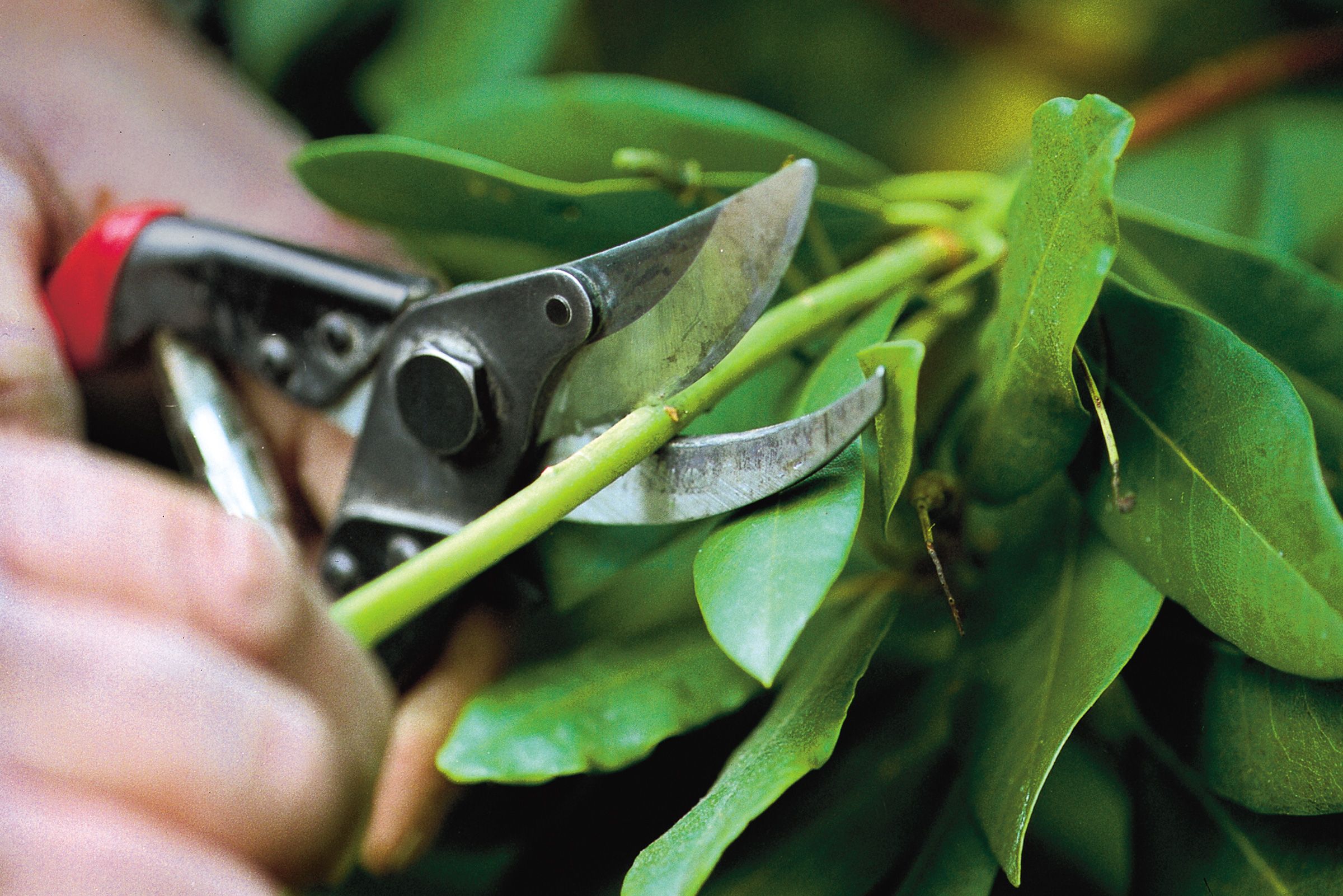
Pruning shrubs helps maintain their shape and promotes healthy growth. Young flowering shrubs benefit from light pruning to encourage fullness. As This Old House landscape contractor Roger Cook advises, “With hand pruners, trim long, unbranched stems by cutting just above a healthy bud. This type of pruning, called heading, encourages lower side branches to develop and enhances the shrub’s natural form.”
For mature shrubs, focus on thinning out old, weak, or crossing branches. This opens up the plant’s center, allowing more sunlight to reach interior branches and stimulating growth.
For more simple pruning techniques, including how to prune aged shrubs, small trees, and when to prune, see How To Prune Small Trees and Shrubs.
How To Prune Roses
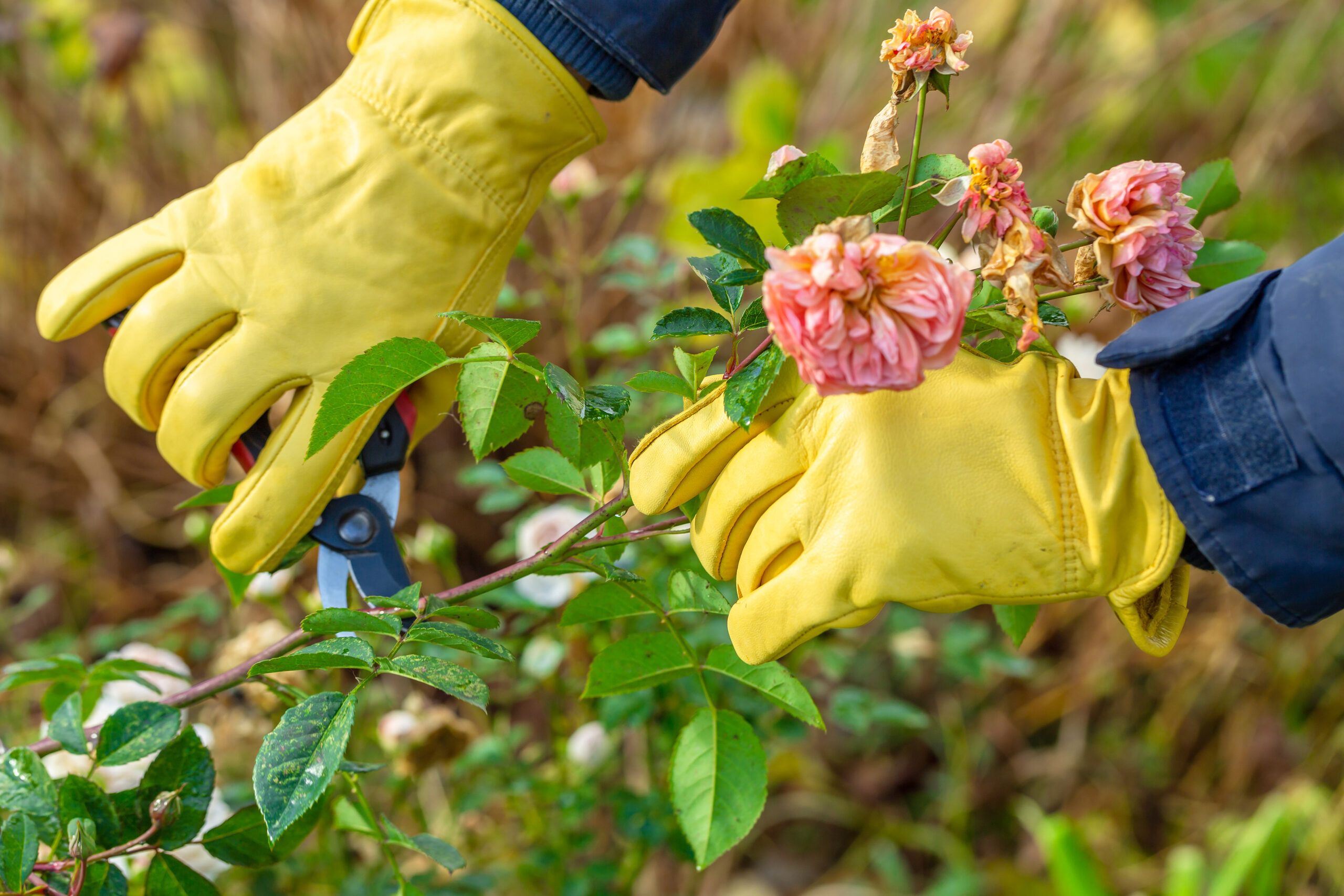
Roses require regular pruning to maintain their shape and encourage blooming. In early spring, remove any dead, diseased, or crossing branches. Cut back the remaining canes to about 12–18 inches, making cuts just above outward-facing buds. This promotes outward growth and helps maintain an open center for better air circulation.
See our guide to what you need to get the job done in Everything You Need to Prune Roses.
How To Prune Hydrangeas
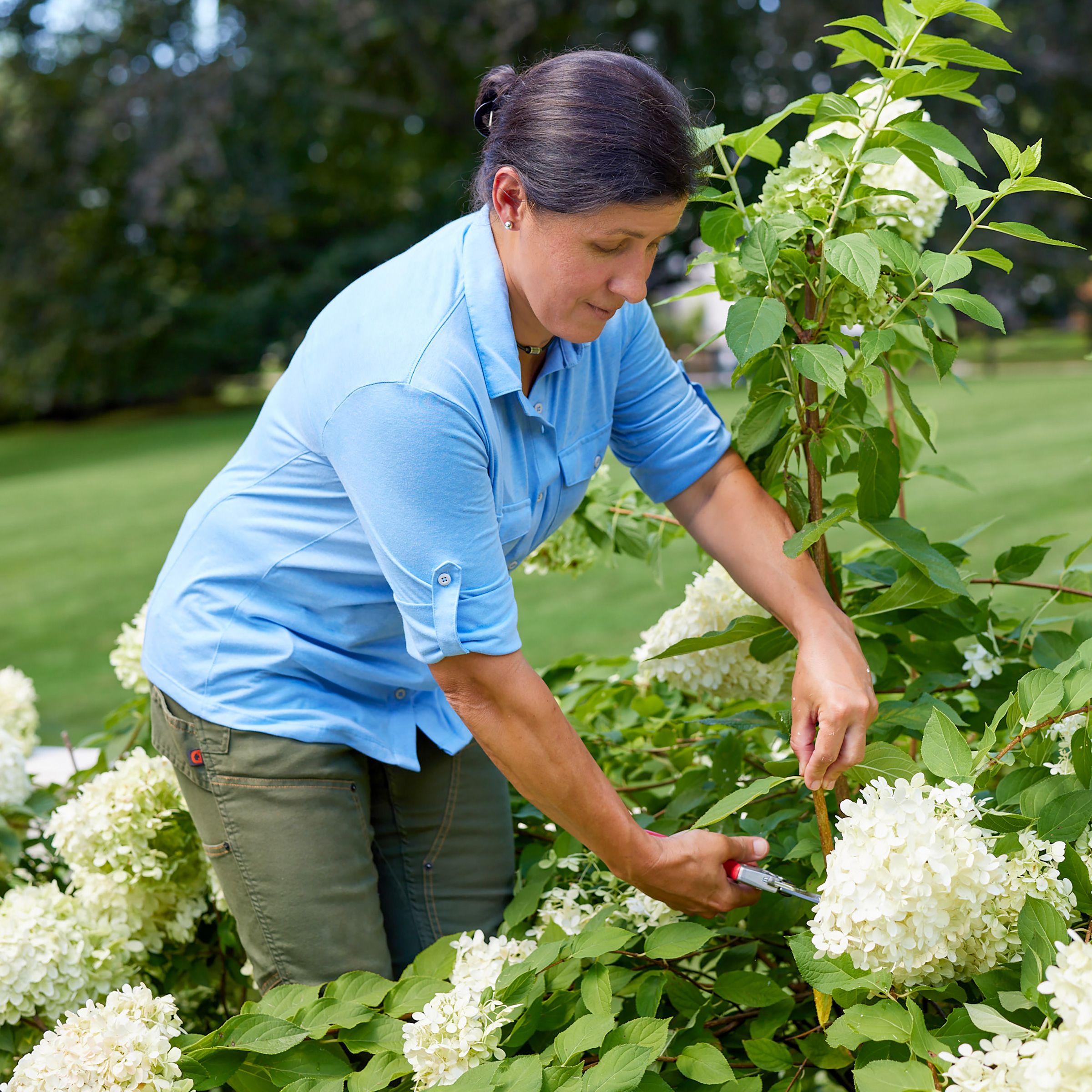
Hydrangea pruning varies depending on the specific variety. Generally, remove dead wood at the base of the plant and deadhead spent flowers. For most hydrangeas, avoid pruning after August, as this can affect next year’s blooms. Some varieties, like oakleaf and bigleaf hydrangeas, bloom on old wood and should be pruned immediately after flowering.
For more on caring for these flowers, see Top Tips for Growing Gorgeous Hydrangeas.
How To Prune Small Ornamental Trees
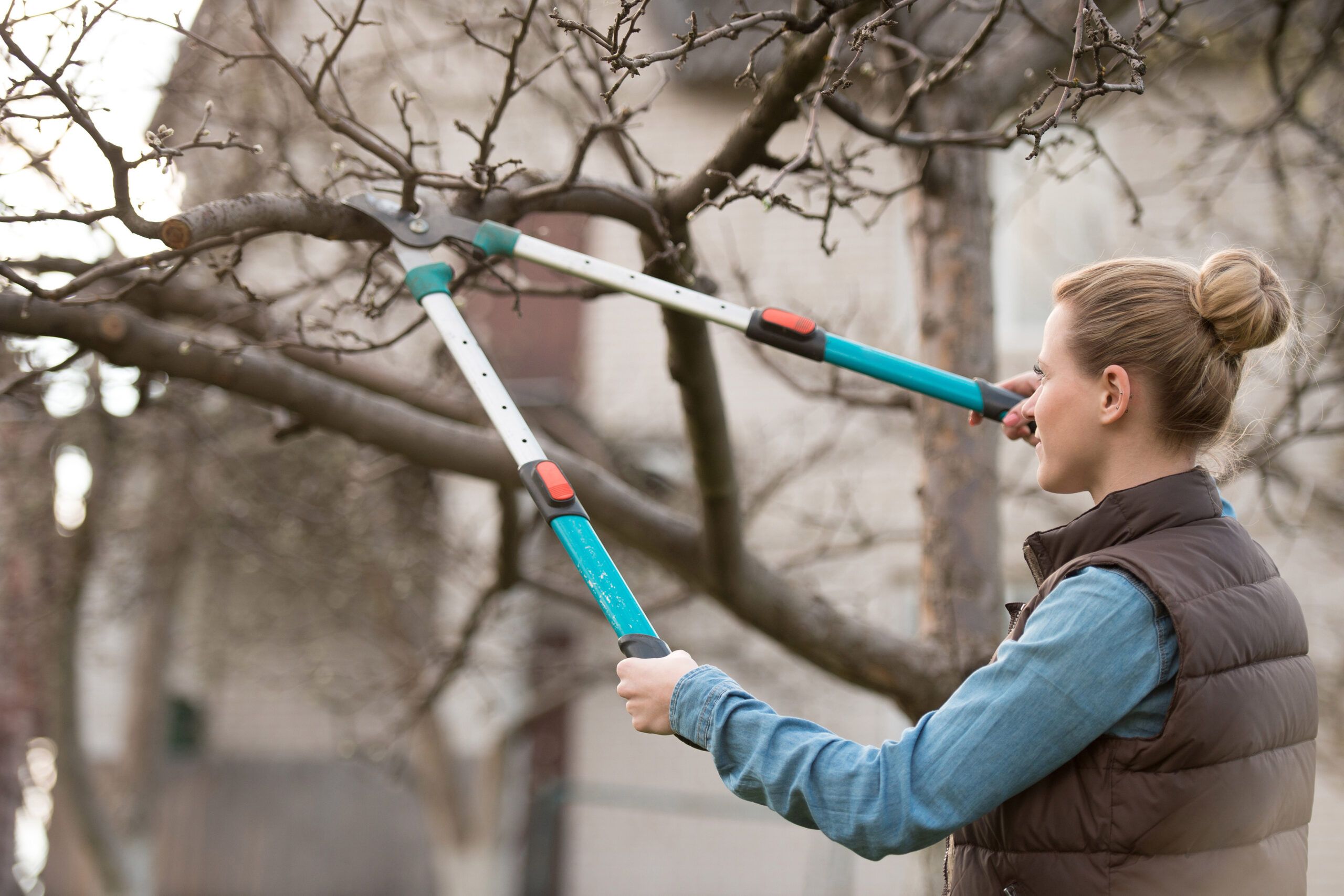
Pruning small ornamental trees enhances their natural form and promotes healthy growth. Bill Pollock, co-owner of Arbor Services of Connecticut, explains, “Pruning stimulates growth. The goal is to encourage the tree to grow strong, healthy branches headed in the right direction. “
Start by removing dead, damaged, or diseased branches. Then, focus on thinning out crowded areas to improve air circulation and light penetration. Finally, shape the tree by selectively pruning to enhance its natural form.
Check out How To Prune a Tree for full step-by-step instructions.
The Art of Dividing Perennials
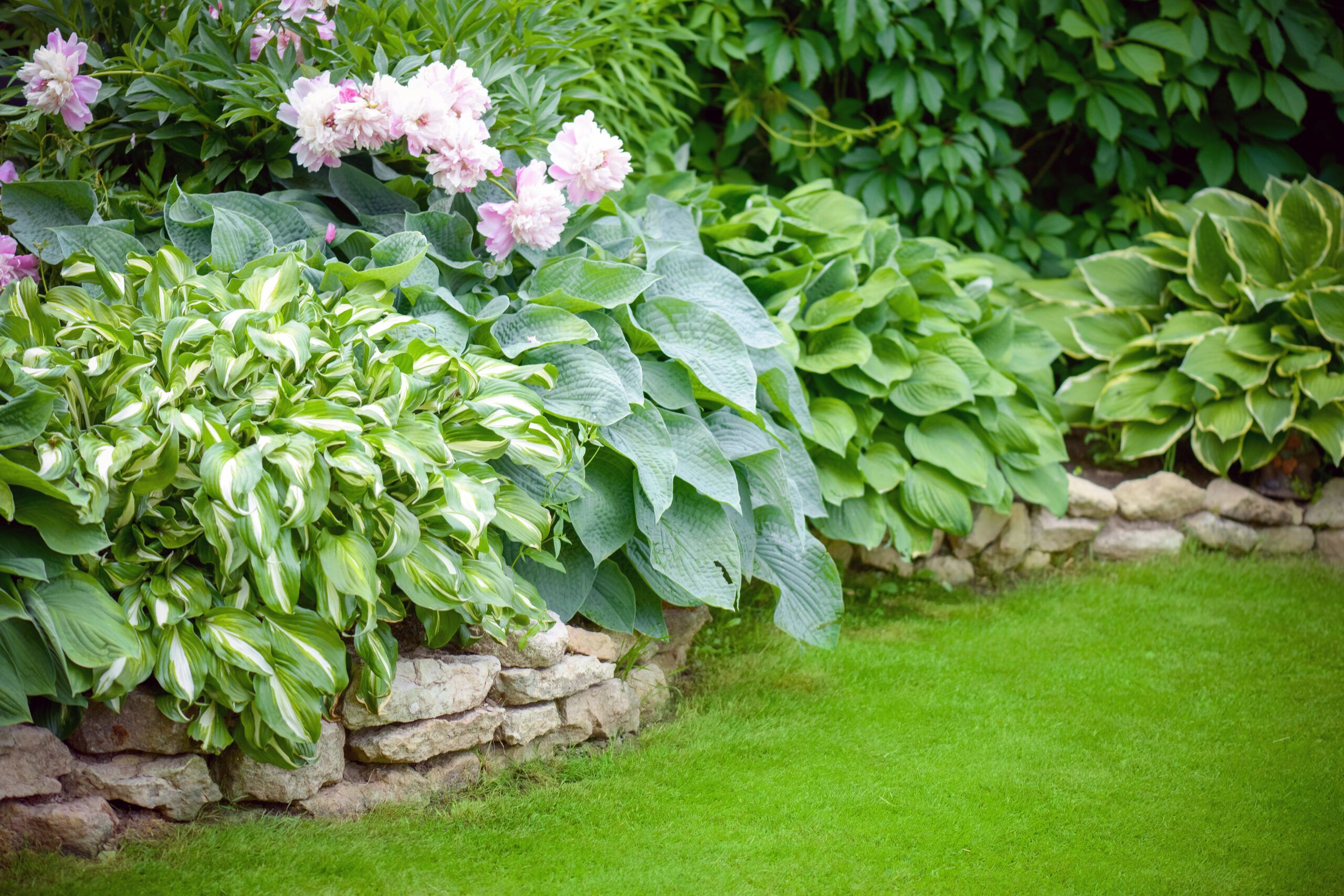
Dividing perennials is an excellent way to rejuvenate plants, control their size, and multiply your garden’s bounty. This technique works best on plants with fibrous or fleshy roots.
How To Divide Overgrown Perennials
To divide overgrown perennials:
- Replant the divisions promptly, water well, and mulch
- Water the plant thoroughly a day before dividing
- Dig up the entire plant, preserving as much of the root system as possible
- Shake off excess soil to expose the roots
- Separate the plant into smaller sections, each with healthy roots and foliage
For full step-by-step instructions, see How To Divide Overgrown Perennials.
How To Divide Daylilies
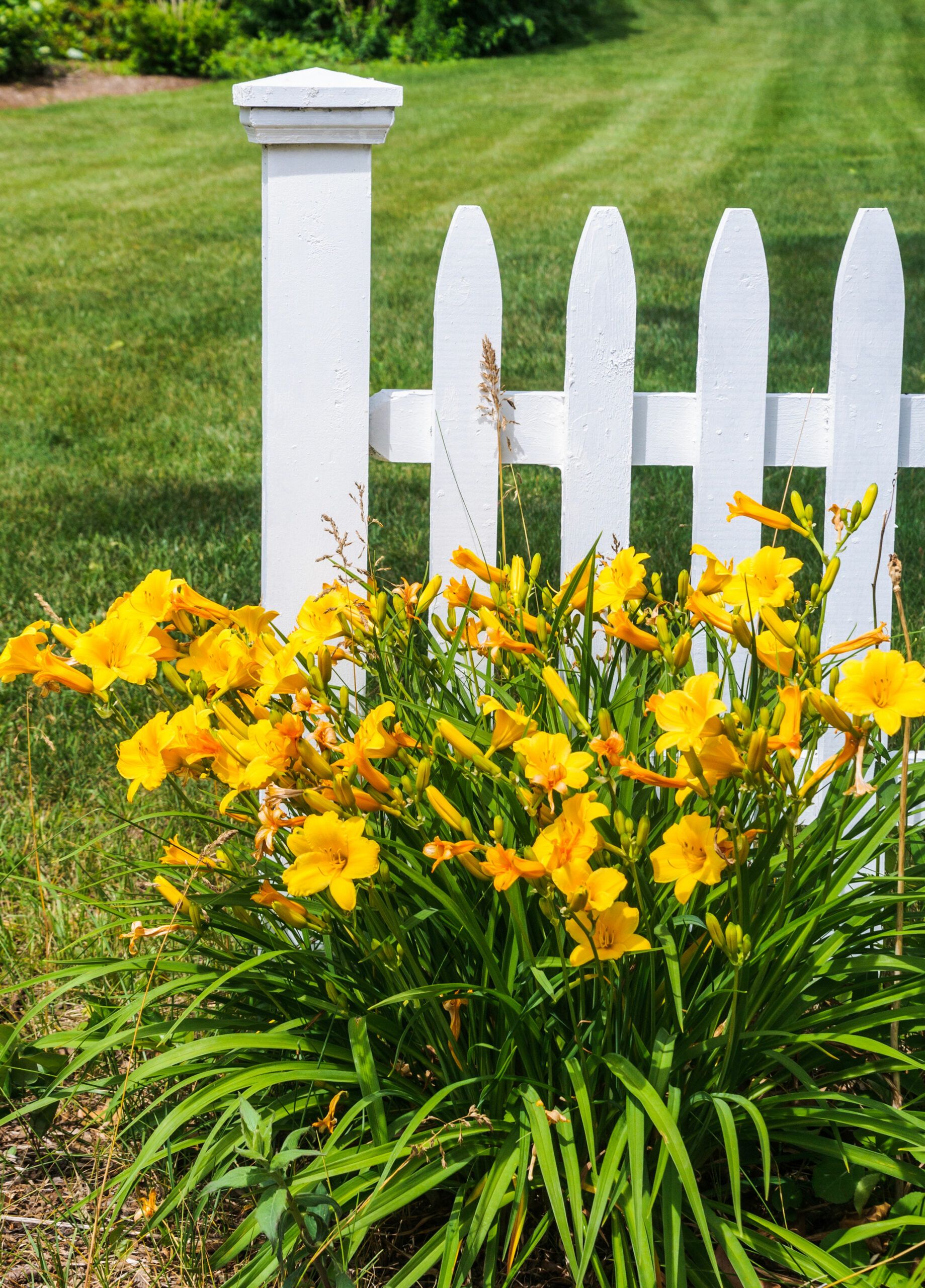
Daylilies are particularly easy to divide. Cook notes, “Daylilies are bulletproof—they can take a lot of abuse.” To divide daylilies:
- Replant the divisions, spacing them about 18 inches apart.
- Dig up the entire clump.
- Shake off excess soil and separate the fans (individual plants).
- Cut the foliage back to about 6 inches.
For full step-by-step instructions, see How To Divide Daylilies and learn how you can double the blooms in your yard using the plants you already have.
Common Mistakes To Avoid When Pruning and Dividing
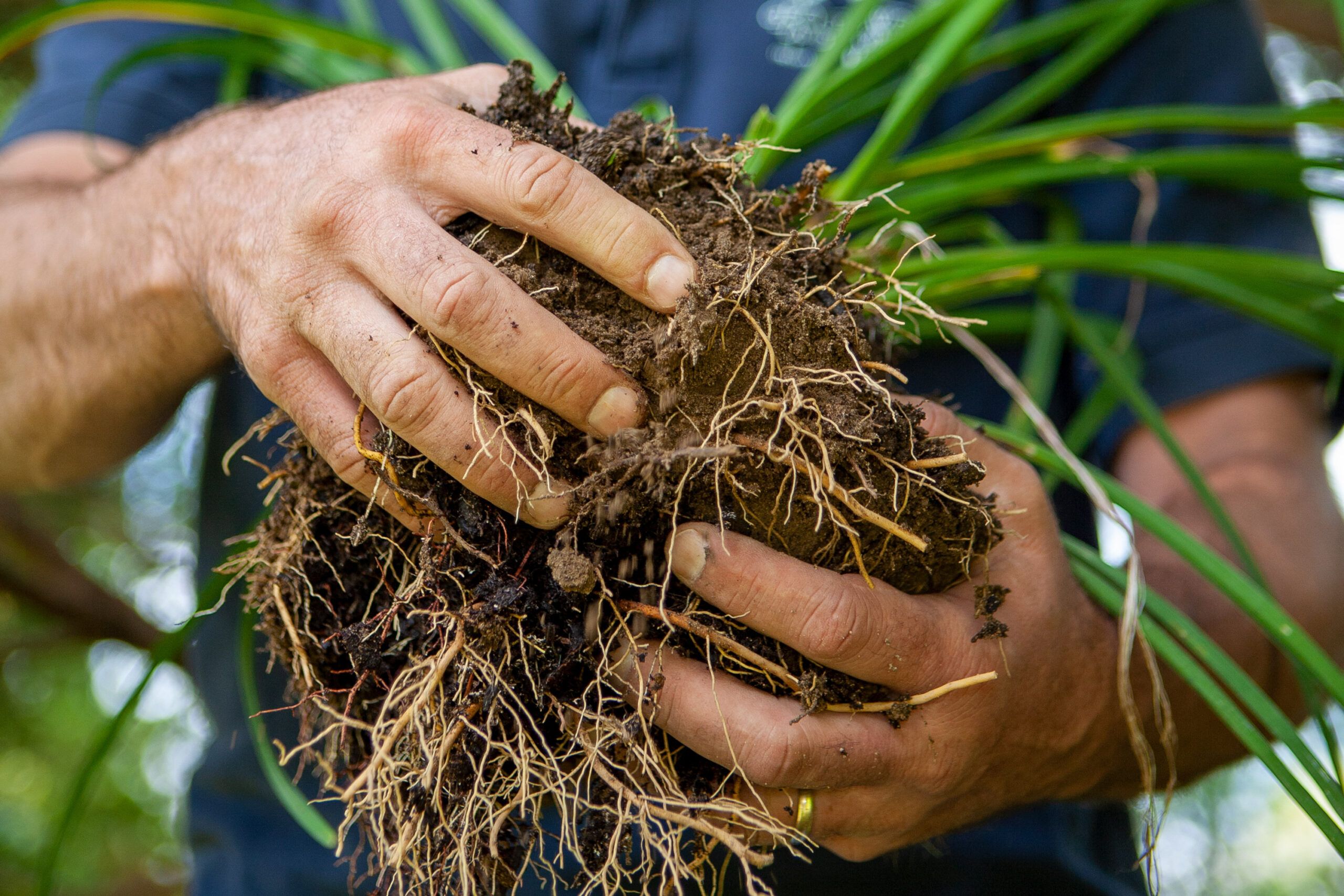
When pruning and dividing, avoid these common pitfalls:
- Over-pruning, which can stress the plant
- Using dull or dirty tools, which can damage plants and spread disease
- Pruning at the wrong time, potentially removing next season’s blooms
- Dividing plants too frequently or at the wrong time of year
- Failing to water newly divided plants adequately
Benefits of Regular Pruning and Dividing
Regular pruning and dividing offer numerous advantages for your garden and plants.
Improved Plant Health
Pruning removes dead, diseased, or damaged parts of plants, preventing the spread of disease and encouraging healthy growth. Dividing prevents overcrowding, which can lead to poor air circulation and increased susceptibility to pests and diseases.
Enhanced Aesthetics
Both pruning and dividing help maintain the desired shape and size of plants, contributing to a more attractive and well-maintained garden. Proper pruning can also increase flower production in many species.
Propagation Opportunities
Dividing perennials is an excellent way to multiply your plants for free. You can use these divisions to expand your garden or share with friends and neighbors.
Prominent Perennials for Division
Certain perennials respond particularly well to division. Knowing which plants in your garden can be divided and when is key for successful propagation.
Hostas
Hostas are well-known for their lush foliage and shade tolerance. They should be divided every few years to maintain their vigor. Early spring, just as the shoots start to emerge, is ideal for dividing hostas. This timing allows the new divisions to establish themselves before summer heat.
Irises
Irises are beloved for their stunning blooms. They can become overcrowded over time, impacting their flowering potential. Divide irises in late summer after they have finished blooming for the season. This ensures that the plants have ample time to root before colder weather sets in.
Peonies
Peonies have a reputation for being long-lasting and reliable bloomers. When mature, they benefit from division every 10 years or so. Divide them in the fall, cutting down stems and carefully lifting clumps to avoid damage to the roots.
Daylilies
Daylilies are robust and easy to divide, making them a favorite among gardeners. Divide them in early spring or late summer. This provides flexibility in managing their growth and ensuring continuous blooming cycles.
Coneflowers
Coneflowers (or echinacea) are popular for their resilience and attractive flowers. They can be divided in spring or fall. These drought-tolerant plants thrive with minimal care, and division keeps them healthy and prolific.
Recognizing When It’s Time To Divide Perennials
Understanding the signs that indicate your perennials need to be divided can help you maintain a thriving garden.
Reduced Flowering
One of the first signs that a perennial needs to be divided is a noticeable reduction in flowering. Overcrowded roots can struggle to gather enough nutrients, leading to fewer blooms.
Crowded Centers
If you observe that the centers of your plants are dying out or becoming sparse while the outer edges remain healthy, it’s a clear indication that they need to be divided. This is common in many clump-forming perennials, such as irises and grasses.
Less Vigorous Growth
Another telltale sign is a general decline in the plant’s overall health and vigor. If you’ve noticed that a previously lush and healthy plant has become weak and sparse, it might be time to divide and rejuvenate it.
Aftercare for Pruned and Divided Plants
After pruning or dividing, plants need extra care to recover and thrive:
- Water thoroughly and consistently, especially during the first few weeks
- Apply a layer of mulch to retain moisture and suppress weeds
- Avoid fertilizing immediately after pruning or dividing to prevent burn
- Monitor for signs of stress or disease and address issues promptly
It’s essential to keep an eye on how your plants respond to these processes. Some plants may take a while to bounce back, whereas others may show immediate improvement. Understanding individual plant responses can aid in planning and executing future pruning and dividing efforts.
